The Real Market With Chris Rising – Ep. 60 Connell McGill
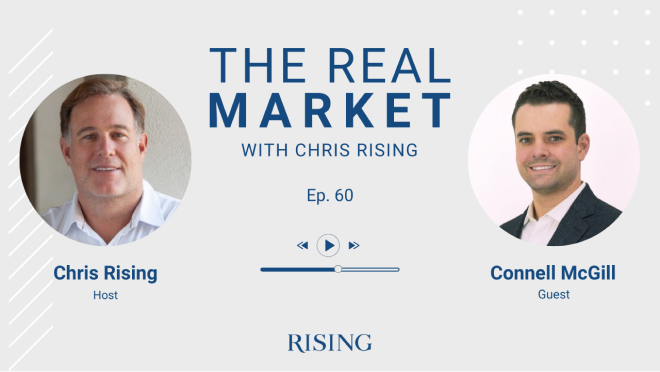
Chris Rising (00:50): Welcome to the Real market with Chris Rising. I’m really excited to have Connell McGill with me. He’s the CEO of Enertiv, which is building PropTech software that I’m really excited about. And given that we’re in this new world, I’m just really pleased to have Connell come and talk to us a little bit about what he’s doing and how he can really for landlords and owners of buildings generate more return on our investments. So Connell, welcome to the Real Market.
Connell McGill (01:15): Thanks Chris. Pleasure to be here. Thanks for having me today.
Chris Rising (01:19): Absolutely. Well, why don’t you tell us a little bit about entertainment and what you all do in the PropTech space?
Connell McGill (01:26): Sure. So Enertiv is an integrated maintenance and energy platform that’s tailored to commercial real estate operators. So we’ve developed a mobile application for building engineers and a web application that brings full transparency into both energy management and maintenance processes within the building for asset management teams and owners.
Chris Rising (02:15): And I was going to say, so what you’re focused on is lowering our operating expenses. So when we go to sell a building or refinance a building, and we can put a cap rate on that with lower operating expenses. Is that the number one value that you see or are there others?
Connell McGill (02:28): That’s exactly right. So first and foremost, we’re looking at opportunities to reduce operational expenses. But in addition to that, we’re really trying to teach real estate operators the industry’s best practices. So a lot of the value that comes from our platform is learnings that we’ve picked up on over our last four years in the commercial real estate industry around maintenance and how to run systems at peak performance that deliver that ultimate operational savings to the end user. So our platform, and I’m sure we’ll get into this later, it’s powered by thousands and thousands of IOT sensors and connected devices.
Connell McGill (03:12): And we’ve been deploying them for the last decade since I started the company. So today we have over 10 billion hours of asset performance data. So we’re able to adjust insights into our platform that deliver returns very quickly for our end users and the portfolios that are using our software today.
Chris Rising (03:32): I know that people have been talking about IOT, they talk about it in their home, they talk about it in the business. It’s been a constant theme that has come up in our operation of buildings. And honestly, over the last four or five years, it’s been kind of hit or miss from our experience. What is it about what you think you all can do that gets people over that hump of well I tried something a few years ago. It didn’t quite work, what with this group? What’s the deliverable that you think is really defining your success?
Connell McGill (04:01): Sure. To be candid with you, I think we’re still figuring that out but it goes back to when we started the business. So Enertiv kind of brings a unique angle to real estate. Nine, 10 years ago, when we launched Enertiv, our focus was on bringing radical transparency to equipment level, energy consumption and operations. We thought of ourselves as an electricity metering company and we were manufacturing smart meters. So we spent years and years and years deploying smart metering infrastructure, the data back haul and networking infrastructure to collect that data in the cloud.
Connell McGill (04:39): And the algorithmic analysis of these data streams. And when we found real estate back in late 2016, early 2017, after participating in the Meta Prop accelerator, we realized that there were sort of a whole host of inefficiencies beyond just energy usage, where we could dig in and add value. So we took a step backward and over the last few years developed a mobile application that starts with the basics, just moving pen and paper processes onto a mobile app and digitizing just about every aspect of the realist of the assets infrastructure on the platform.
Connell McGill (05:22): So we start out with capturing all the equipment nameplate information, images of the equipment, uploading the blueprints and mechanical electrical diagrams to enable remote operations. Then we upload preventative maintenance schedules. Those aren’t available. We bring in industry best practices. We add rounds, we add inspections and very quickly we get the operators at an asset level really focused on the highest value add activity using software. Connell McGill (05:58): I don’t know if you know this, but the average building operator spends about 16% of their day just walking throughout the building. And so there’s a lot of room for optimization there. And so we’re helping them get there.
Chris Rising (06:10): There is a habit to it. When you own something, because I’m guilty of this too, there is a little bit of I want to make sure if there’s any trash to pick up, a little element to that. So I don’t know if that’ll go away, but I agree with you. There’s a lot of wasted time of man or woman hours that really can’t be accounted for. And it sounds like you’re picking up that slack.
Connell McGill (06:30): So we’re trying to keep operators focus. We’re trying to bring way more transparency than it’s ever existed for owners like yourself. And we’re trying to make real estate operations less reactive. Today 98% of maintenance tickets are corrective maintenance and only 2% are preventative. And that really hits the bottom line because if you’re performing preventative maintenance on your critical systems, like chillers, pumps, air handling units, elevators, you can actually extend the lifetime of that equipment by 20 to 35% and also reduce the energy usage as a result of doing so. So it’s all about giving operators that focus. Once we have sort of this basis for the day-to-day operations or providing visibility into areas to uncover savings for owners, we start recommending various different IOT ad-ons or we call them power ups.
Connell McGill (07:31): And that’s what makes Enertiv a connected SAS platform. We’re not just selling software, we’re selling software that brings together a lot of these sort of traditional point solutions that you’d find in a class A office property onto one platform. And then we enhance them by incorporating IOT sensors, real time data sets and best practices from the industry. But yeah I think sort of the key value around IOT is being able to dig deeper. If you start out with just software, there just simply isn’t enough infrastructure in today’s buildings to really get to the root of what’s causing the problem. What’s driving expenses. Why are utilities skyrocketing?
Connell McGill (08:14): The problems are far greater than that. If you want to learn about your air quality, your tenant comfort throughout the building. An IOT helps answer those questions, but to be effective with IOT, you really need to lean on the experience of operators and you need to try things and break things and try new things. And so we’ve done a ton of that over the last decade. And the real estate industry has helped us figure this out in time.
Chris Rising (08:40): Well, you have a great group of investors. I’m kind of honored to say, I’ve had a few of them on my podcast from Fifth Wall and MetaProp and all. But this is a competitive space and there are people out there that I know that ping us all the time. What is it you think about what your product is and what you deliver is a differentiator from some of the competition that’s out there?
Connell McGill (09:04): Well, I think again, it goes back to offering a comprehensive operating software platform for real estate operators and enhancing traditional software tools with real time data. So, you might run into companies who are going to help you with your work order system or more traditional computerized maintenance management, or you might run into players that can help you with tenant sub-metering or demand response and demand management, or utility bill paid utility management, or just daily rounds, daily preventative maintenance and maintenance in general. We bring sort of all of these operational pillars onto one tool.
Connell McGill (09:51): So a lot of our customers from day one by consolidating these solutions many of which are legacy onto the Enertiv platform, they’re getting savings right out of the gate. And then we deliver additional savings over time once we figure out how the property works, how it’s functioning, the roles of the individual team members onsite and sort of where there’s room to tighten things up around maintenance and energy costs.
Chris Rising (10:20): I know this next question is probably not going to be a surprise to you, but maybe to our audience. One of the things that I find frustrating about all of PropTech that’s out there is that while people at my level say, “Hey, we got to figure out a way to capitalize on this data to make money. How do we convert that?” What I go down a level about at the property level, the engineers, there’s a disconnect. I don’t think either they don’t want things to change or they don’t understand how they change.
Chris Rising (10:51): So I would imagine part of your big challenge is how do I get those engineers to say that are your product is one that makes sense and makes their life easier. How do you have that conversation? How do you do it? And then from the asset manager level, maybe outside of the engineer, how does the asset manager use that information and not have their 15th software that they have to deal with?
Connell McGill (11:16): Those are great questions and you’ve started to answer it for me by suggesting that you need to make the engineer’s life easier. So all of our tools that we’re developing have the end user’s experience in mind. How can we get engineers answers to technical problems faster? How can we ensure that their time on the Enertiv app is delightful and that everything is running smoothly. And how can we save them time period. So one example that I like to highlight, and this was really a home run for us when we released it about a year ago, is we started rolling out a solution that we call asset tagging. So when a new customer comes on board the Enertiv platform, we actually send the engineering team QR codes, and we ask them to populate the Enertiv app with each critical system in their building. And then to put the asset tag on the system.
Connell McGill (12:15): And then in the background, my team is uploading all the content related to that system, whether it’s the repairs and maintenance manual, the critical parts list, the vendor contact information or the warranty, it’s all there. And then when I mentioned sort of integrating with other systems, integrating sensor data, if that’s in place at the building, all an engineer has to do is walk up to let’s say their chiller, scan the asset tag, they can see the last time maintenance was performed, what was performed, whether there was a conversation internally amongst the team about that maintenance. They can see the recent fault history, the energy usage, the cost to operate per square foot, or the cost to operate per hour, run time hours, as well as all that documentation that I just mentioned.
Connell McGill (13:07): So instantaneously, all of the answers that they need for questions that they have throughout the day are available on the fly. So one of the things that we strive for internally at Enertiv is how can we answer just about any question the engineer throws at us at the building level under 60 seconds. So we’re not entirely there, but that’s what we’re aiming for. And then the tie in with asset management is really important because a lot of times we’ll call managing directors of asset management. We have a lot of these as customers, and they’ll have no idea what tools are being used at the site, or if they’re being adopted, or if they talk to one another, the data’s being shared.
Connell McGill (13:49): So we involve them in the conversation from day one by providing tools that give them transparency into activity and performance and cost savings opportunities onsite, but also in involving them on a quarterly basis with the onsite engineers, when we review insights that are tied to asset value that are being identified with our platform or by our client success team.
Connell McGill (14:13): So this is not an industry where you can just sort of hand the operators software and expect it to work. You have to take a hands-on approach, and it really takes time to tailor these solutions to what the market needs. And that’s where a lot of our focus has gone in over the last few years.
Chris Rising (14:31): I noticed not only from the investment side, but from your customer side. I mean, you’ve got some pretty big names. Are there some examples of where you’ve had great success that we could talk about a little bit?
Connell McGill (14:41): Sure. Well, I think a fun one would be to talk about some of our recent successes at One California Plaza.
Chris Rising (14:49): Terrific.
Connell McGill (14:50): So in partnership with the Rising Group and Colony Capital, we took out One California Plaza about seven or eight months ago. And the impact to date has been pretty tremendous. It started by deploying our equipment monitoring solutions, where we put an infrastructure to track the performance and usage of all of the building’s pumps in the chiller room and the boiler room. We integrated the water meters. We connected the exhaust fans, the air handling units, the rooftop fans, and the supply fans. And this was an asset where a lot of the preventative maintenance had been done quite manually.
Connell McGill (15:34): So we put in best practices around daily rounds and preventative maintenance. The engineers were helping us capture a lot of data from the site and from the infrastructure to confirm that the BMS is operating as expected per the mechanical schedule. And just two weeks ago, we identified an opportunity to reduce runtime hours on your pumps by about 84%, which was $20,000 in savings right off the bat.
Chris Rising (16:06): Wow. That hadn’t even gotten to me yet, so that’s good to know.
Connell McGill (16:10): That’s something we’re pretty proud of. We’ve also adjusted schedules around your lobby, air handling units and parameters under your variable frequency drives that have added to that savings number. But I think what we’re most proud of right now is we’re working with the building team to achieve LEED certification for the property. We’ve integrated all the water meters to help monitor water usage, water performance. And we’re also looking at the indoor air quality, which is top of most landlords list with the onset of COVID-19.
Connell McGill (16:47): So in addition to generating maintenance reports on the systems that impact air quality using the Enertiv app, we’re monitoring the outside air rate in the ventilation system to confirm that the building is upholding the outdoor air mix that the CDC recommends and your team has been doing a great job there. So that’s one really concrete example that I thought would be fun for the audience since it’s in your portfolio, Chris, but we focus on a handful of key asset types. We started in office, we work with large multi-family operators. We were doing a lot of business in hospitality right before COVID, and now we’re in logistics as well as data centers.
Connell McGill (17:34): And within each of those asset types, we’re working with one or two of the top 10 largest owners by total square footage in the industry. So I think today we’re up to over 70 connected portfolios across the US and our systems are up and running in about 27 different States.
Chris Rising (18:00): Wow.
Connell McGill (18:00): So it’s a lot of progress over the last couple of years, but as entrepreneurs like to say, it’s just the beginning and we’re just getting started. So [crosstalk 00:18:11].
Chris Rising (18:11): Are there things-
Connell McGill (18:11): There are plans to continue expanding.
Chris Rising (18:13): Well, you’ve had great success and it’s been a pleasure to watch it. Is there anything unique about systems within the United States that are different from Europe or Asia or South America, or is this the kind of technology that can really be a global type of technology?
Connell McGill (18:27): Well there’s some variability around standards that can affect what types of sensors that can be deployed on different continents. There’s also some variability of the electrical infrastructure. If you really get down into the weeds around how panels and circuits are laid out in buildings, but Enertiv is moving in a direction where we’re pretty much hardware agnostic. So working with our end users, once we know what their goals are and leveraging our experience to determine what sensors or what data is needed to hit those goals, within each of these continents or countries, we can identify specific providers if we’re not able to use our go-to OEMs and vendors in the US to achieve those goals.
Connell McGill (19:21): So I would say this technology can be leveraged globally there are just adjustments that sometimes need to be made based on where we’re operating, on the hardware side of the business, the connected aspect. In terms of the value that the software is deliver in digitizing properties and taking on most of the in building back of house operations, that can scale today across the US and in fact we just planted our first flag in Europe working with one of the largest industrial warehouse operators out of the UK.
Chris Rising (19:59): That’s pretty exciting. And I would imagine that industrial which is a little bit probably a step behind where office is, in some ways, but in other ways, they’ve really just jumped ahead in terms of ESG kind of things with solar panels and stuff. But I have to imagine that industrial offers a huge amount of opportunity for this kind of stuff, because it’s not as capital intensive and industrial building as it is in a office building I imagine.
Connell McGill (20:22): Yeah. I mean each asset type requires us to sort of rethink the model a little bit to make sure that the solutions are tailored to sort of the end of the building or the end space and industrial as you are well aware, most of the leases are triple net. And so right now we’re working on a new model where we put in sort of the intelligence, we’re calling it the brain into the asset. And that’s what lets us connect various different types of sensors and devices to the space. So industrial right now from the owner’s perspective, they want to know how their solar panels are performing, they want to know the high level energy usage at the space. And they want to be able to market a connected space to the end user. But because there’s so much variability of tenants and the tenants businesses in industrial, it’s hard to say exactly what sensors are going to add the most value to the tenants businesses.
Connell McGill (21:22): So what we’re doing now is from day one, a tenant can move in, adopt the Enertiv app. The Enertiv app basically presents a digital instruction manual on how the building works and how to maintain all the systems like the HPAC or the air handling units that are on the roof. But then depending on the needs of their business, they can kind of customize their sensor implementation and we can unlock solutions whether it’s looking at the lighting levels for productivity and comfort, whether it’s looking at temperature to avoid freezing, or to maintain certain temperatures, or even if it’s looking for moisture in certain areas to ensure that leaks get caught right away and don’t affect or damage inventory. We have all these tools and power ups again as we call them, ready to go out of the box that we can implement on the behalf of the logistics landlords.
Chris Rising (22:20): So what do you say you’re looking at the future and we’re looking at the advancement in both software and hardware. I mean, a lot of people are talking about this 5G world we’re going to move into. What do you think from where we are today to where you see the future going for Enertiv and the technology. I mean, is it really an arms race where you’re competing with all your competitors to try to stay ahead of them? Is it do you have your elbows out and your box stops, you can keep them at Bay. Talk a little bit about the future and where we’re headed with this kind of stuff.
Connell McGill (22:52): Sure. I mean, well, in general, I think competition is good for any market. And if you look at our space, without knowing too much about IOT which for the audience if you’re not aware, it’s stands for the internet of things, and these are all these different sensor players as well as competitors with what they’re calling building operations software platforms, they’re all different and they all do different things. And I think that that’s important to note. So what’s always been core to our strategy is really putting in the time it takes with industry leading portfolios to get the solutions just right, that we can scale them across their assets, portfolio wide, and then introduce those learnings and there’s tools that have been developed over time with other players in the industry. In terms of some of the latest technologies and where I think this is going, you mentioned 5G, one of the things we learned during COVID was the increased value of digitization and remote operations.
Connell McGill (24:03): Suddenly when you couldn’t depend on the stack of papers on an engineer’s desk, or you couldn’t send five people into the building really quickly. I think a lot of operators realized that they just didn’t have their ducks in order. So for us, the first step is digitize everything so it’s accessible in the cloud on demand. And we have another solution which we call Enertiv 360, which is a lot like Google street view but for your building. So if your consultants have questions or you have questions, or the asset management team would get to your set of questions and maybe they’re on vacation, or it’s a weekend, they can jump right in and click around, click on systems, look at them, see how they’re oriented in a space. And so I think functionality, that is just going to get better in time.
Connell McGill (24:48): It’s going to become faster and more real, whether that’s true digital twin, or you can click on these systems and maybe there’s like a explosive parks view, and you can basically train someone remotely on how to repair a certain system or how to maintain a certain pump for example. You’ll be able to do that with the advancements and higher speed connectivity to the end asset and the sensors themselves.
Chris Rising (25:21): Have you had any issues where you go in and just things like basic things you need to have, whether it’s broadband or the equipment is just too old where this just doesn’t work. Are you able to figure out a solution no matter really what the building it is, whether it’s hotel, industrial office.
Connell McGill (25:41): Yeah.
Chris Rising (25:41): What are some of those challenges and are they really a challenge for your technology?
Connell McGill (25:46): Sure. So when we first came into real estate, everyone was sort of picking their vertical or sort of the asset type that they wanted to play in and serve. And initially, since our expertise was coming out of connected meters and sensors, we went after class B office properties and older multifamily towers, because typically there was no building management system. And there wasn’t a lot of data flowing from the site. So we could go in, expose how energy was being consumed, how systems were performing, how the operators were performing and deliver a ton of value. Over the years, we’ve gotten better at integrating with the building management systems and offering software only solutions.
Connell McGill (26:33): So we’re at a point where we can bring just about the same amount of value to your trophy class A commercial office property that’s an over a million square feet, like One Cal or your smaller sub 250,000 square foot sort of mid-rise or even garden style multifamily asset. So that’s always been a focus of ours, being able to deliver a software platform that could bring value to buildings of all shapes and sizes, because most landlords have a mix of assets in their portfolio. And we wanted to be able to serve them all, service them all over time.
Connell McGill (27:17): But to your point about technical challenges, we see all sorts of things. I mean, it’s from the BMS integrations. Like sometimes these are small computers that are sitting behind engineers desks in three feet of cabling nods, or in some cases we’re in buildings where it’s really hard to get a 4G cellular connection in the property. But we haven’t found a building yet that’s completely stumped us on getting an internet connection. So, well sometimes it can be challenging.
Chris Rising (27:53): Your growth has been amazing, but let’s take a step back. So you’re as a young person, graduated I think from Cornell, do I have that right?
Connell McGill (28:01): It was actually Babson College in-
Chris Rising (28:03): Babson.
Connell McGill (28:05): 2007, yeah.
Chris Rising (28:05): I had that wrong, my fault. Let me ask you this, you come out of Babson, you took a consulting job for as I understand it and had the idea for this company. So you are a real entrepreneur, were you always that way? I mean most 23 or 24 year olds quickly fall in love with having a salary every week and don’t think about starting their own company even in this more digitized world we’re in. So what happened for you? You come out of Babson, you’re working for a little bit. What was the bug in? How’d you get it going?
Connell McGill (28:38): I had the bug my entire life. I mean, I was always trying to launch businesses and generate revenue and see what I could learn from the experience since a very young age. I think as like most entrepreneurs, it starts with lemonade stands and then it evolves into trading and selling baseball cards to car detailing businesses and web design consultancy. In college, I even launched a small hot dog franchise called The Lucky Dog. So I was always kind of trying to try things out to see what kind of a business that I could build. And that’s how I ended up at Babson. Number one in entrepreneurship nationally according to the US News and World Report for the last 20 or so years. It was just a place where I can go and talk to a bunch of other people that were obsessed about starting companies.
Connell McGill (29:35): I went into consulting because my parents were generously helped me get through college and it was time to earn a salary. And so New England Consulting Group, it was the only company I applied to. I got the job. I went down to Westport, Connecticut for about a year and a half. And it didn’t take long until I got exhausted from waking up at four o’clock in the morning on Mondays to fly down to Raleigh Durham and consult Reynolds Wrap on aluminum foil gauges. So I knew I wanted to do a lot more and at 24 my best friend and co-founder who also went to Babson with me Pavel Khodorkovskiy, we decided we wanted to get into the building space and we wanted to build systems that helped eliminate energy waste. At the time we really wanted to bring efficiencies to buildings.
Connell McGill (30:32): We’d learned from the EPA that properties were wasting about 20 or 30% of the energy they were consuming. And we wanted to see what we could do to have an impact there. So today we just did this exercise recently, we found that given how large we estimate the total addressable market for Enertiv to be, in our internal GHG assessments. We believe that by 2050, Enertiv will be able to reach 2.5 billion tons of carbon savings globally. Chris Rising (31:08): Wow.
Connell McGill (31:08): So it took us a little while to get there. The key insight was sort of demonstrating to landlords that we could transform data into asset value and while doing so reduce carbon emissions.
Chris Rising (31:24): That’s got to be the number one thing because when I talk to whether it’s brokers or I’ve talked to investors, there’s always this very healthy skepticism that anything around impact strategies, anything around climate change, carbon reduction, you’ve got to prove to them that it’s real. And I think in the last couple of years, that’s changed. And I think with the Biden administration, at least over the next two years if not the next four years, there’s going to be incentives to make this worthwhile. So you kind of have the tiger by the tail in terms of that but as you look at how you’re growing your company, I want to say some things for the end but I want to jump back into how you’re running your company. You’re a young couple people who’ve built this company. How big are you now? How many employees?
Connell McGill (32:11): Today we’re roughly 30 employees and we’re planning to add 10 to 12 new resources to the team with or without a financing raise in 2021.
Chris Rising (32:24): And then how many offices is that?
Connell McGill (32:28): Well it depends-
Chris Rising (32:29): Or locations.
Connell McGill (32:29): I was going to say-
Chris Rising (32:29): I was going to say or locations.
Connell McGill (32:32): We’re all operating virtually. And so we were based in Manhattan for the last decade. Our last office was in West Midtown on 37th, between eighth and ninth, we were on the top floor. It was a beautiful space. But now we’re operating all over the US and in some cases internationally. So COVID has virtual operations and the pandemic has really changed the way we think about the business and how we want to run it. And so we’ve been hiring new team members all over the US and it’s changed our strategy significantly.
Chris Rising (33:09): So to be able to do that, that means you must’ve really started in a good place. So when the lock down came and pandemic started, you were already well-positioned. What kind of technology were you using that allowed you all to do this mobile workforce? Is it a Microsoft backed Teams? Are you on Google? What was kind of the software that allowed you to do this during the pandemic and to continue to grow?
Connell McGill (33:34): Sure. So right before the pandemic hit and we were just adopting Zoho, which is a business operations platform. And like most companies that use Zoho, we started out on their CRM. But COVID really put the magnifying glass on all of our internal systems and processes and documentation. So is your classic take one step backward to go two steps forward, and it’s helped us become a much more scalable business. We no longer have colleagues tapping us on the shoulder every three minutes asking for basic information. Now that’s all documented, and there are links that you can find that. And then if you can’t, then you can ask for help and we’ll fix it. But going back to your question about systems, Zoho has about 40 applications in total, and I think over the first six months or so, since the pandemic hit, we adopted 30 plus.
Connell McGill (34:33): So everything from how we manage projects to our internal communication tool, they have a product that’s very similar to Slack to issuing billing around our subscriptions to our accounting. All of this is being done on the Zoho platform.
Chris Rising (34:52): Wow. And is that kind of agnostic, it doesn’t matter if you come out of a Windows world or an iOS or a Mac OS world, you can access all that on the web [crosstalk 00:35:03]?
Connell McGill (35:03): Yeah. It’s a web app that you can access in Chrome and with native applications on device and they have similar to Enertiv tools on mobile and for the web. It’s a really flexible model. We’re on the Zoho One package, which basically one subscription and you can use all of the applications that they have available. So it’s affordable. And what we like about it is all of the apps talk to one another. And so they share data to enhance different capabilities. So for example, with our internal messaging tool, which is Click the Slack competitor, we can ask through Click, “Hey, what were revenues last month? Or can you pull this contact up?”
Connell McGill (35:50): So Click can talk directly to our CRM. So we like little features like that. And it’s inspired us in terms of how we think about building Enertiv and starting users off on a simple tool, like the CRM in our case, but then exposing them to other solutions which they likely need. If you want it to, you could run your email on Zoho. So we love that model.
Chris Rising (36:16): Interesting.
Connell McGill (36:16): We really like that model.
Chris Rising (36:17): I do think all of the platforms, whether it’s Teams or Google or you name it, they are investing a lot of money. And I think what we look at collaborative software today, give it another year, the leap is going to be big because they’ve finally gotten whatever remains of the boomer generation that’s still working hard, got them comfortable. And then Gen X line, I think we’re all pretty comfortable. But I think there’s going to be some big jumps. Now the question I want to ask you running a company with 30 plus people, what do you do about culture? What do you do about mentoring? What are those kinds of things that really get fostered when you have a workplace? Are you concerned about that and how are you going to combat it?
Connell McGill (36:57): I think that obviously both of those aspects are really important and we’re not completely abandoning physical space. We already have a coworking budget that any member of the team, especially post vaccine has the option of using if they need a little bit of separation between work and home, and they want to move into a coworking space from industrialists or WeWork or can be any of the number of numerous players. We just completed our sort of planning calls with the team and a number of folks really do, and not all, but a number of folks really do miss the collaborative element.
Connell McGill (37:38): So we’re certainly trying to fill that in as best as possible using the software tools that are at our disposal. But similar to companies like I believe Airbnb, who’s using their offices as collaborative studios, where we have certain regions and geographies that are densely populated with our team members, we might have spaces where they can come in and work together. We’re going to test a lot of different things out but culture to us is super important and so is mentorship. So it’s a work in progress. We’ve been doing company off sites and we plan to really ramp them up especially once the pandemic starts to wind down.
Connell McGill (38:35): But I talked to a number of different CEOs that were managing 100, 200 person companies that were virtual from the start, and they really talked about the importance of regularly getting the team together, or getting sub sets of the team to go out to dinner and talk about their business challenges and strategies. There’s also ways to get the team together using Zoom and whatnot.
Connell McGill (39:04): And I’m sure you’ve heard of the morning yoga sessions or the happy hours. We also have a lounge that’s always open, it’s just a Zoom link. And someone on my team recently came to me and said, “Hey, can we just have like a link that we can go and talk to our colleagues about work or not work issues outside of conference calls and meetings.” Yeah, sure that’s a fantastic idea. So now we have the Enertiv lounge and it’s getting people back together without being physically in the same space.
Chris Rising (39:36): I like that I get very sensitive because we are in the office business and as are you, so at the end of the day. I don’t think any of us went to college or worked really hard so that we could work out of our room in our house. I mean, there are things around business lunches and dinners that are important. I mean, conferences, there’s a lot of conferences I enjoy going to. I’d hate to see those go away, but until people feel safe and I don’t know when that is going to end, hopefully it’s in the next few months, I think these kinds of things are what people are going to search for, but then we’re going to see it meld.
Chris Rising (40:09): I mean I was listening to the … This is way off topic, but I was listening to the game last night with the Saints where Alvin Kamara, the running back of the Saints was on COVID, he couldn’t be a practice and they literally put a camera and a microphone on the coach. And while the coach was coaching practice, Kamara was watching it on Zoom. So you start thinking about it and you go, okay, there’s going to be more and more of this in our business life. But I just don’t think a 24 or five-year-old is going to want to be around you to learn. And you just don’t get that if you’re not in the same room over periods of time.
Connell McGill (40:42): Yeah, it’s not the same. It’s definitely not the same. And it’s going to be more of training videos and regular meetups, but that’s what’s challenging for the guys that are just getting out of school right now. I mean, we had 10 years in the office and we sort of were able to figure out what it’s like to work in an organization in the space. They don’t really have that. So we’re sort of simulating what we once had virtually. And so it’s sort of a big question mark how the next generation of office workers are going to get up to speed. So I absolutely don’t think the office goes away, but it’s really interesting to see as these different plans and models evolve and how landlords are going to respond to a post pandemic era.
Chris Rising (41:24): But I think we were heading that way slowly, but now this is the shock to the system, but I’m one of these, flipping back into your business and the challenges we face. I know as an owner of property, fortunately, we own mostly class A and people have been paying their rent. But the challenge has been, people are not occupying. So how do you set up your schedules in terms of janitorial and engineering to deal with the fact that we’re really at 10% occupancy. And then we don’t know how is it going to go from 10 to 15 and then 15 to 20, or is it going to go from 10 to 30 and then back to 20 and then up to 60. It seems to me that your product is going to be very helpful to owners and engineers as that unfolds. What do you see that you can do to help us, help building owners as occupancy comes back to their buildings? So that we’re ahead of it not behind it?
Connell McGill (42:16): I remember when the pandemic first hit, the role that we wanted to play as a business was to get as close to our clients, to not try to really pressure them to adopt any new technology, but to genuinely figure out what is going on and how can we help. Early on some of the questions were are the tenants showing up and did they remember to turn their building systems off in their spaces and what the heck is going on? We think we’re at very low occupancy, but our utility bills haven’t shifted downwards as expected. So now one of our solutions is in the automatic tenant billing and tenant sub-metering space and meter reading space on the Enertiv app. And so we were able to take that data and put it through our Microsoft BI and Google Looker tools and say, “Hey, well, we don’t know exactly what’s happening at your side, but using your sub-metering data as a proxy for occupancy, this is what’s happening in the spaces from an energy perspective.”
Connell McGill (43:22): And I think it was an eye opener to some of the class A office operators that I’m referencing whose names I won’t disclose because they knew those tenants weren’t in the spaces and that they were sitting at that time five to maybe 12% occupancy. And so they ran a lot of initiatives running off on top of our data asking operators if they could wind things down or turn systems off in their absence to reduce their operating costs. But generally what we saw after COVID was that usage didn’t drop as much as we all expected it to. And that was because you had larger organizations figuring out how to adopt simple tools like Zoom that we take for granted now, but back in March it was a big challenge. How are we going to run these companies outside of the office? And the last thing on their mind was energy efficiencies and runtimes and operating costs of their office spaces.
Connell McGill (44:23): I think that that has certainly changed. But key to all of this was being able to share the data with the end users to show them what was happening and to your question about best time for maintenance and runtimes, I think a lot of that is experimental and it sort of varies by asset type and the operator. But what we are seeing is a lot of owners are really leaning in, looking at this as the time to digitize, especially in the office space because there’s not the risk of downtime or potentially disrupting the tenant experience.
Connell McGill (45:08): And there’s increased cost pressure too because we were following the CDC guidelines and you’re increasing your indoor air out take, your systems are all working much harder for a lot less tenants. So there’s a new focus on operational cost management and increasing transparency by systems like ours. And in fact, I don’t know if you saw it, but there was a recent Deloitte piece on their outlook for commercial real estate. And 56% of executives said that because of COVID-19, it’s really exposed many of their shortcomings operationally and that they plan to begin adopting more technologies to digitize. So it’s an interesting time for commercial real estate, it’s an interesting time for property technologies like ours.
Chris Rising (46:04): And I think one of the things that the reality is if any 60 year old or 50 year old or older engineer thought they can finish their career, not really having to dive in on digitization and working from software, they’re wrong. So I think the biggest pushback we’ve had it’s not because people are bad people, it’s just a fear of what does this mean for my job and what we’ve said over and over again is that you still have to be … It’s a tool that you have to be able to use.
Connell McGill (46:32): I think that’s really important. And I think that … Going back to one of the earlier questions about how do you get the on-site teams buy-in, there’s an increasing amount of pressure on these operators. So being able to answer questions from ownership and asset management faster can really help them. In addition to that, I think as owners we need to be a little bit more aware about how the building engineer has been running the property for the last 20 years consecutively, what they’re actually doing and how these systems work and the relationships of all the system sub-components because the average operator is 58 years old today.
Connell McGill (47:24): And the next generation of operators that are going to want to do things differently, and they’re going to expect there to be tools in place that they can use in technologies to streamline a lot of these workflows. So as some operation operating teams have been cut as a result of COVID, landlords have found themselves kind of scrambling for answers around best practices. And how do we at least get back to running this property the way it was running pre COVID.
Chris Rising (47:56): There’s not a whole lot of good news just sitting here in Los Angeles with the COVID and that I’m in lock down, but I can tell you that I have seen a push to I’m not going to just sit at home and try to just hope everything’s okay. I’m seeing more and more of my friends who were operators, we’re all looking for how do we make that investment in whatever PropTech it is really show a return. And I think when you hit on the things we talked about just for One Cal and how we open up these buildings and how we change how we open them up. So we use them more efficiently. I mean, I feel like you guys are really well positioned for the future. So as scary as everything is, it’s got to be pretty exciting for you as you sit there and talk to your investors and you look at your crystal ball.
Connell McGill (48:43): I mean it’s definitely exciting because again it’s accelerated and we had a strong year in 2020 as a result of that. But again to your point, there’s a lot of uncertainty. We’re just as curious about how the market is going to shift and offices, one of our biggest customer segments. So we need people to go back to offices as well, but in terms of supporting the customer, the value of having the data that platforms like ours can capture is that you can be experimental, you can be iterative, so you can try things and right away see the impact of operating a certain a certain way or testing a new operational strategy. So that real time feedback and getting the answer right away is helping a lot of operators through sort of the testing phases of the new demands in the market today.
Chris Rising (49:45): So as we wrap up here, as you look at not just your growth because obviously your growth is taking on more buildings no matter what type they are, what do you think are some key things on the technology, is there a hurdle that your product need is going to address that will be game changing or your competitors? Are you concerned about, what do you think is that kind of new, new thing within everything that you do?
Connell McGill (50:09): So look, I was really concerned back in the first early second quarter of this year, because we had typically led with a high CapEx cost system that was being implemented in properties that three or four months later would open up this data heavy sort of software experience. So we had to completely change our playbook. And that’s what led us to launching a software first mobile application that can stand on its own two feet without any hardware that can be slowly over time enhanced by integrating IOT data streams. Because for the first couple of months, no one wanted third-party vendors installing systems in their properties or touching their building management systems or going anywhere, multi-family was you can’t go near anything that could impact the tenants because they’re in these buildings 24/7 right now.
Connell McGill (51:10): So we needed to get creative and build quickly to land on a solution that could help operators through this without having to go to the building. So that was a massive challenge that I think we solved fairly well. And it’s put our business on a completely different trajectory. In the past when we were selling hardware first or hardware enabled software, we were looking at one or two or five buildings at a time. Now new customers are coming in and saying, “Well let’s start with 25 or let’s start with 30, or we’re going from the first five hardware projects to the next 25.” So by looking at solving some of the simpler issues that we can scale faster on the software side, it’s changed our business for the better.
Chris Rising (52:04): Well, it’s a very Steve Jobs in view things. He always says hardware is very hard. If you get the software and you get people connected to that software, that it opens up the hardware sales.
Connell McGill (52:15): Hardware is really hard. We have a culture that a team that just loves hardware because of what it enables and what the data coming off hardware makes possible. So while it is hard, it’s truly what can put our platform in a league of its own by unlocking just exceptional capabilities. And I’ll give you some examples. I mean, it goes far beyond predicting end of equipment lifetime or predicting equipment failures, or detecting them in real time. In some cases it can be even simpler than that. By being able, right now only about 15% of operators perform preventative maintenance on equipment. And that’s really bad because as I mentioned, it impacts uptime and it impacts the equipment’s longevity.
Connell McGill (53:08): If you have a real time data set coming off of say an exhaust fan or chiller, or your boiler or pump, you can see how many hours it’s running per day. And then based off of those hours, the software can tell the operators, “Hey, you can actually defer to the maintenance for another two months because this system hasn’t been used or let’s accelerate maintenance because it’s being highly used. And if we don’t, it might fail.” So it’s just little features such as that where you can take a real-time data set to enhance a traditional application that might’ve just been an app for calendar based PM as you see in today’s traditional CLMs software platforms.
Chris Rising (53:50): That’s terrific. Well, Connell I’ve really enjoyed having you on the podcast. I learned so much, but this was amazing. And I also really liked to hear from you the savings we found at One Cal. So I really appreciate you being on the podcast.
Connell McGill (54:05): Thanks, Chris. This has been a great conversation. I’ll definitely share some more about the savings at One Cal, just so you can see what we’ve been up to there and thanks for the wonderful opportunity. I hope you have a great 2021.
Chris Rising (54:18): You too. Thanks. So we’ll edit this and we’ll put a post on it, like your Twitter or anything like that. But I really enjoyed the conversation, I thought it went great.
Connell McGill (54:29): Hopefully I didn’t surprise you too much with the One Cal thing, but I just thought-
Chris Rising (54:34): No.
Connell McGill (54:35): It was fun. And I wasn’t even sure if you were aware we were doing business together.
Chris Rising (54:39): No, I knew that very much though. I just didn’t know that we’d gotten a bunch of data yet. So no one had told me that … So I always love to hear and hear you saw a natural reaction.
Connell McGill (54:49): Great.
Chris Rising (54:50): I was very aware we’re doing business, that’s why I wanted to have you on.
Connell McGill (54:53): Cool. Well, that’s excellent. I’ll send an insights deck your way just so you can see sort of what we’re focused on and what’s coming next, but I’ll tell you what, you have A class team there-
Chris Rising (55:05): Thanks.
Connell McGill (55:05): And they’re really on top of the ball and my team’s enjoyed working with them.
Chris Rising (55:09): Thanks. Hey, what was the name of this CRM thing that you used?
Connell McGill (55:14): So, I’m a big fan of this. It’s a company called Zoho, Z-O-H-O. And it’s a bootstrapped company out of India that grew themselves to 7,000 employees.
Chris Rising (55:23): Wow.
Connell McGill (55:24): It’s a Salesforce killer. We were on Salesforce and had to move off because it was just too clunky for our small team. And this has great visuals and really light, easy to use applications. And it really saved us, it really saved us last year.
Chris Rising (55:42): I’m a big proponent of Asana and we use all the G-suite stuff in the workplace, but I’m starting to see what … My wife works at Gensler and they use Teams and I’m like, “Well, I’m not Microsoft Hammer. I’m like we’re not getting the functionality but Teams is pretty amazing.” So I’m going to take a look at this because Teams getting old. [crosstalk 00:56:03].
Connell McGill (56:03): That’s what happened to me. I was going to a conference with a friend of mine who owns a NavigatorCRE and he’s going uploading all of his contacts into some application. I was like, “What the heck is that? That looks so easy to use.” He said, “Hey, it’s Zoho.” And we use G-suite and I think that’s great. Zoho has just been just so helpful, if you need data it gives it to you quickly, and the tools are easy to learn. So highly recommended if you have questions, I’ll be happy to help.
Chris Rising (56:32): Great. I’ll take a look. All right, my friend.
Connell McGill (56:34): Cool. Thanks Chris.
Chris Rising (56:35): Thanks Connell. All right, see you.
Connell McGill (56:35): All right, bye.
Chris Rising (56:37): And please, don’t forget to follow us. We’d really appreciate it. If you subscribe to the podcast, you can do that on Apple iTunes, or any of the other podcasting services. It’s The Real Market with Chris Rising and follow us on Twitter @ChrisRising or @RisingRP. And please follow our blog, chrisrising.com or RisingRP.com. Thanks so much.
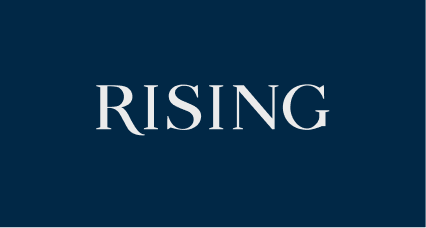
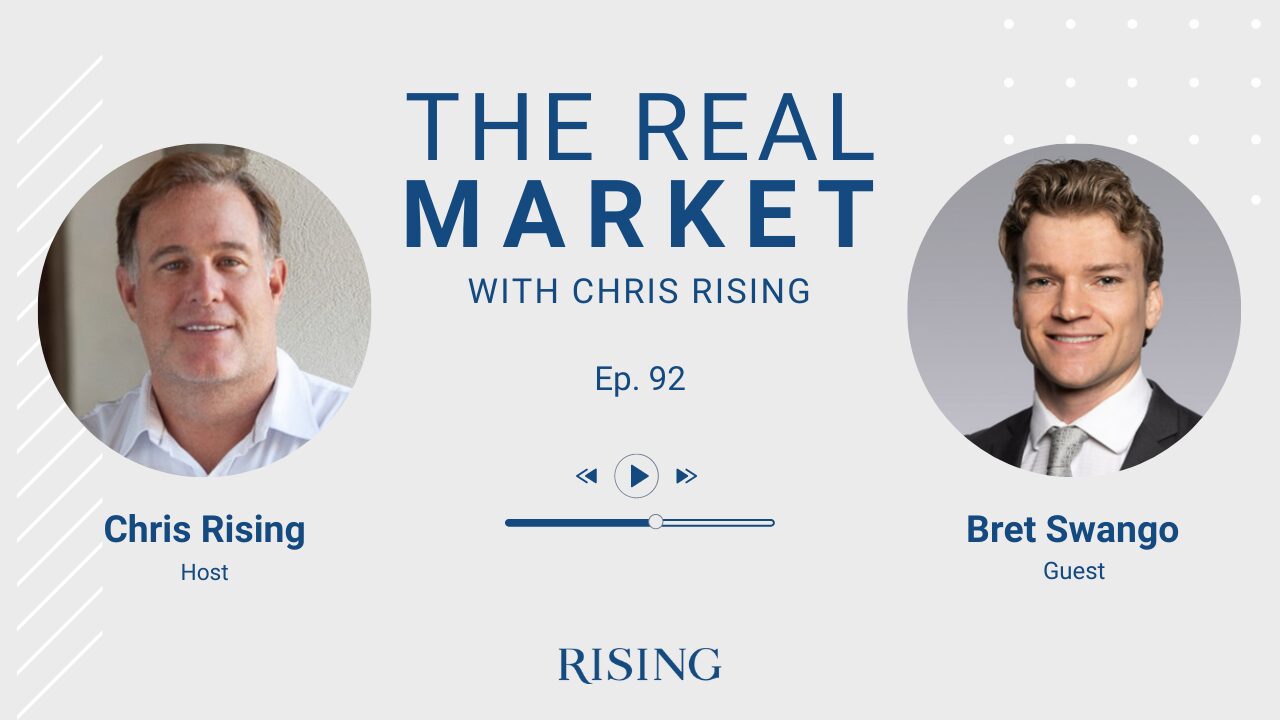
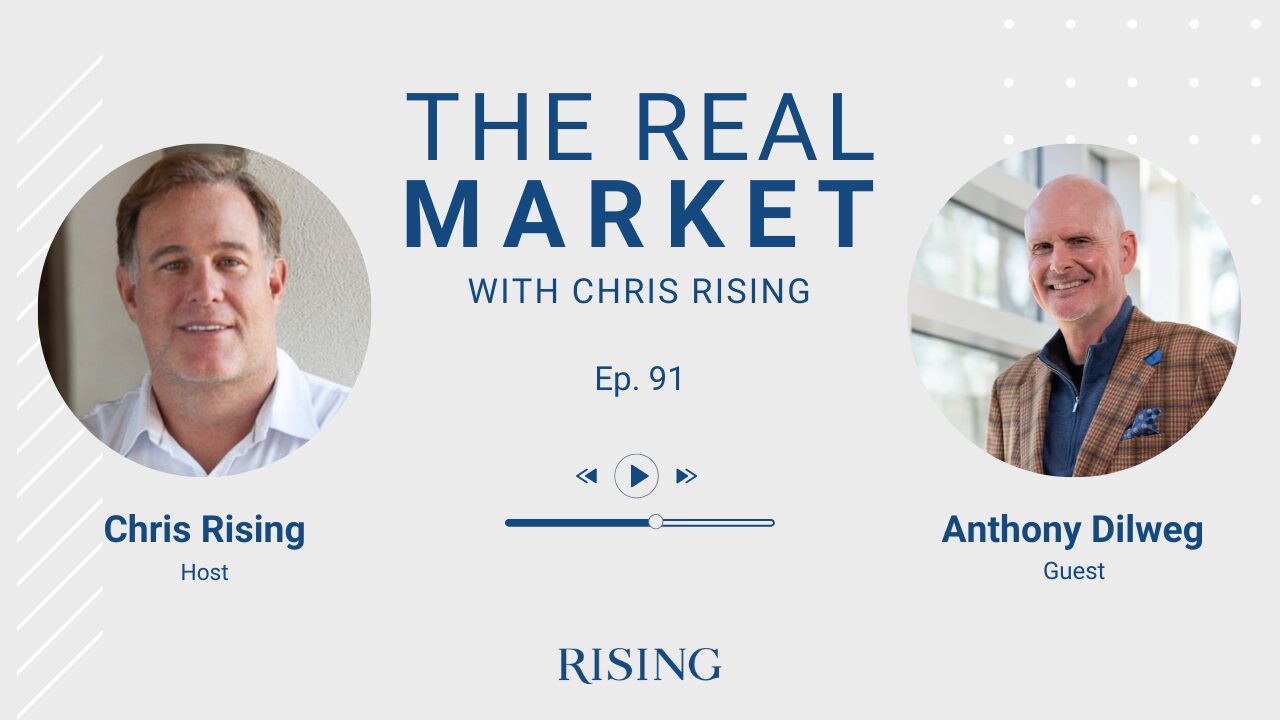
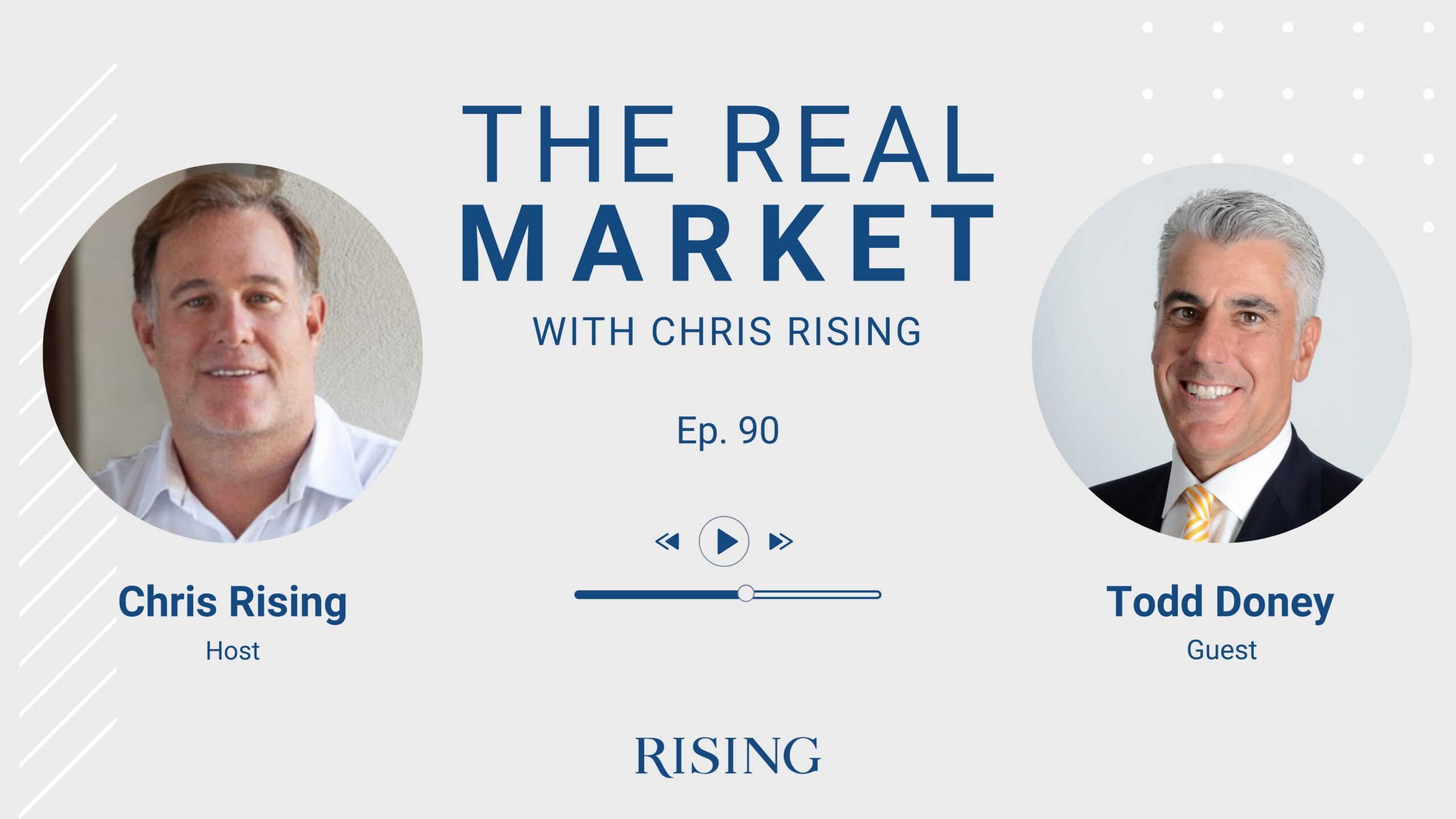
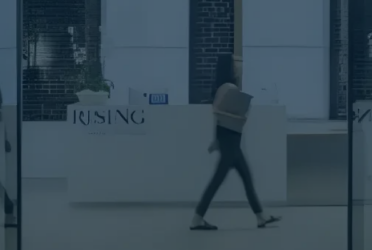
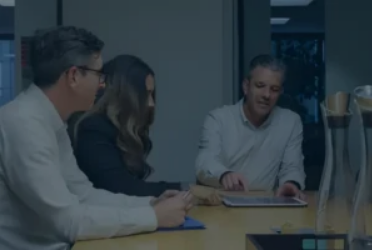
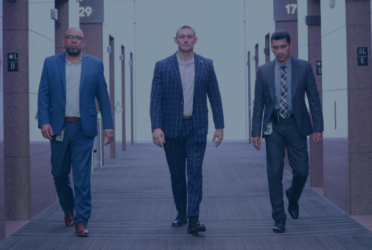
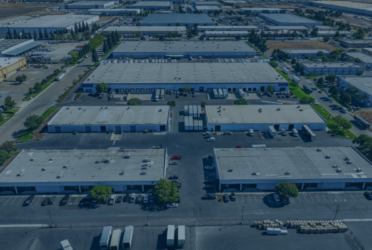
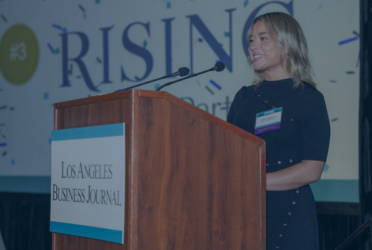
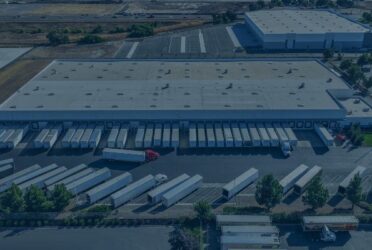
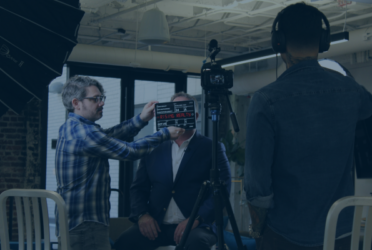
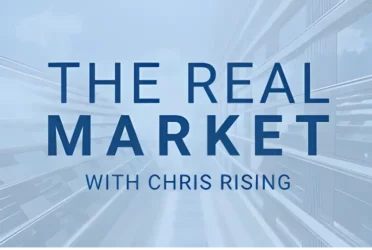 Podcast
Podcast